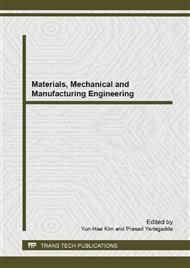p.420
p.427
p.433
p.439
p.445
p.449
p.455
p.462
p.466
The Calculation of Train Slipstreams on Platform of Underground High-Speed Rail Station
Abstract:
This paper describes the results of numerical work to determine the flow structures of the slipstream and wake of a high speed train on platforms of underground rail station using three-dimensional compressible Euler equation. The simulations were carried out on a model of a simplified three-coach train and typical cross-section of Chinese high-speed railway tunnel. A number of issues were observed: change process of slipstreams, longitudinal and horizontal distribution characteristics of train wind. Localized velocity peaks were obtained near the nose of the train and in the near wake region. Maximum and minimum velocity values were also noticed near to the nose rear tip. These structures extended for a long distance behind the train in the far wake flow. The slipstream in platform shows the typical three-dimensional characteristics and the velocity is about 4 m/s at 6 m away from the edge of platform.
Info:
Periodical:
Pages:
445-448
Citation:
Online since:
November 2013
Authors:
Keywords:
Price:
Сopyright:
© 2014 Trans Tech Publications Ltd. All Rights Reserved
Share:
Citation:


